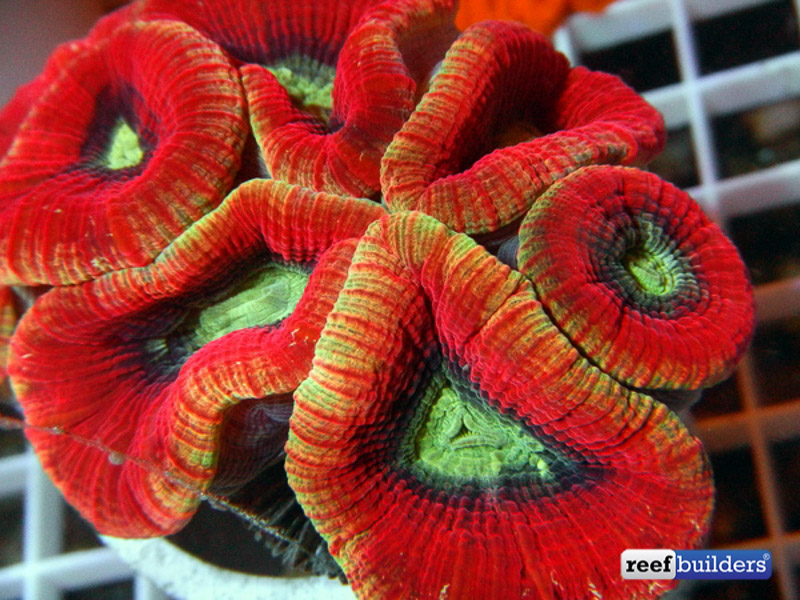Is it a Acan lord? Is it a Lobophyllia? No this funkadelic coral is one of the wildest Trachyphyllia corals we’ve ever seen, with a crazy morphology to boot. This one of a kind Trachy was acquired by Aquatech Imports, a wholesaler that was both elated and flabbergasted by what appears at first to be a ‘colony’ of Trachyphyllia geoffroyi.
Lots of corals are colonial by their very definition but Trachys are not one of them. Normally, read almost always, Trachys are a single corallite, with a single polyp that may or may not have multiple mouths. Very rarely do you see examples of Trachyphyllia with a couple corallites emanating from the same skeleton, but never have we seen a piece that takes it to the extreme such as this one.

At first glance, the small and circular polyps have the right shape and color to be a wild example of Acanthastrea lordhowensis. A second look reveals that the polyps are too large and irregularly shaped to be an Acan lord, but could be about right for a Lobophyllia.
Seasoned aquarist will recognize that the texture and color of the living tissue is well in line with Trachyphyllia and a look at the skeleton reveals a storied past in this particular specimen. While the polyps are completely out of whack with what we come to expect from a Trachyphyllia, the underside of this particular specimen still retains the familiar, hourglass, figure-8 shaped skeleton base.

The most likely explanation for the unusual condition of this coral is that at some time it was buried to a point where parts of the coral died back, highly plausible since this coral normally lives on sandy habitats. However, the remaining tissue survived this potential sedimentation episode and instead of growing back together, the isolated tissues differentiated into multiple mouths which have grown and filled in to create this truly singular example of T. geoffroyi.
With so many corals in so many colors and shapes available to the modern aquarist, it’s easy to think by now we’ve seen it all. But as this confused colonial Trachy clearly shows, mother nature still has plenty of tricks up its sleeve with how corals can grow in unexpected ways.









